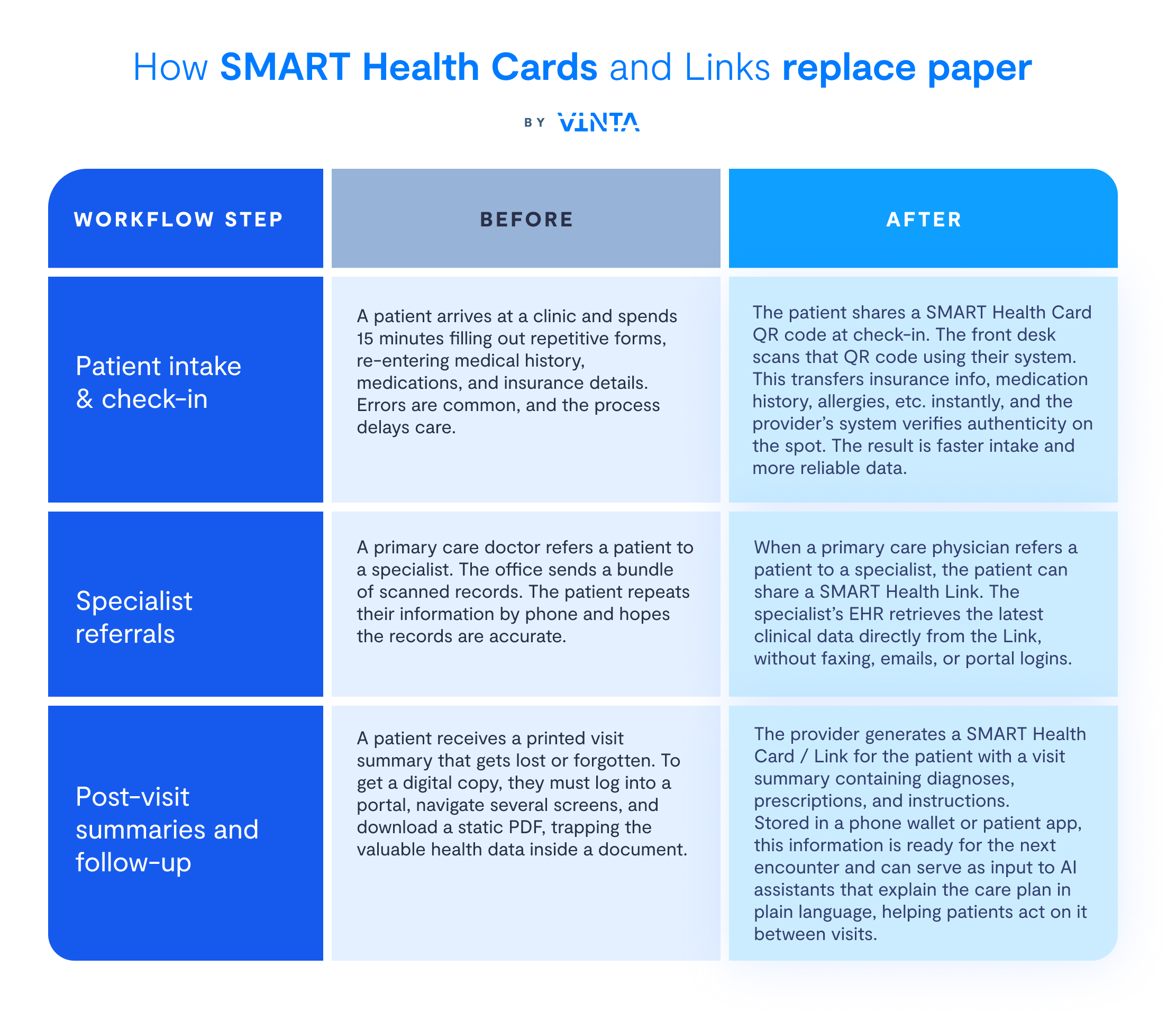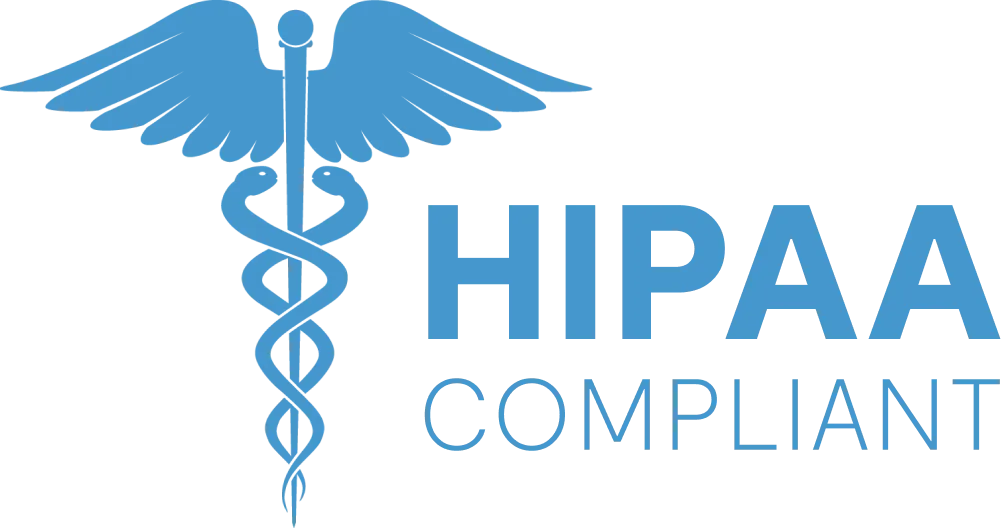Kill the Clipboard: enable paperless patient intake and health data sharing
Patient health data sharing is still a common barrier in healthcare. Repetitive forms, whether on paper or in outdated portals, frustrate patients, create gaps in medical records, and disrupt care coordination. To address this, the Centers for Medicare & Medicaid Services (CMS) introduced the Kill the Clipboard initiative, part of its Interoperability Framework. The goal is to eliminate repetitive intake and enable secure FHIR-based data flows that reduce clinical burden and strengthen continuity of care.
Aligned with these goals, Vinta has launched the Kill the Clipboard library, an open-source TypeScript toolkit that gives development teams the tools to build systems compliant with this new standard.
The CMS Interoperability Framework mandate for modernization
Clear expectations for patient-facing applications are set by the CMS Interoperability Framework, which defines three core capabilities that systems should support:
- Use trusted digital identity to verify patients - Use approved identity standards (IAL2/AAL2) like mobile driver’s licenses or passkeys, eliminating the need for new portal logins.
- Receive patient data via FHIR - At check-in, applications must be able to receive a patient’s health history and insurance data directly from their device using QR codes, SMART Health Cards, or SMART Health Links.
- Deliver a digital summary of care - At the end of an encounter, patients must be able to retrieve their visit summary (notes, diagnoses, instructions) in a structured FHIR format.
The core technology: SMART Health Cards and Links
At the heart of the Kill the Clipboard library are SMART Health Cards and Links, the tools that enable the CMS requirements. Both give patients control over what they share and how.
A SMART Health Card (SHC) is a secure, verifiable QR code with a snapshot of health data, such as vaccination records or medication history. It is cryptographically signed to prove authenticity, and patients decide what information to include.
A SMART Health Link (SHL) works differently: instead of a snapshot, it provides a live connection to up-to-date health records. Patients can share a Link with a provider to grant real-time access when needed.
SHCs and SHLs can be generated in patient portals, with the patient controlling what is shared. Once stored on a smartphone, both Cards and Links turn the device into a portable, secure source of health data that can be used across encounters to ensure safer, more coordinated care.
Simplifying patient intake and health data sharing
Here’s how a typical workflow looks when SMART Health Cards and Links replace paper forms and portals:

The result: faster check-in, fewer errors, and a patient-controlled flow of information that spans intake, referrals, and follow-up. This creates value for patients and providers, while also enabling digital health platforms and care networks to integrate patient-shared data into their workflows, supporting better coordination, interoperability, and innovation in care delivery.
Our solution: the Kill the Clipboard library for CMS-ready interoperability
The Kill the Clipboard library is a free, open-source TypeScript toolkit that makes it easy to implement CMS-ready SMART Health Cards and Links. It provides a straightforward API for:
- Generating and cryptographically signing SMART Health Cards from FHIR data.
- Generating and managing SMART Health Links.
- Creating QR codes that represent Cards and Links.
- Verifying the authenticity and integrity of Cards and Links presented by patients.
- Reading the data contained in Cards and Links.

The library is a universal toolkit that runs in both Node.js and browser environments, giving teams the flexibility to use it across backend and frontend. Check out the Kill the Clipboard library on GitHub and try out the open-source tools that bring SMART Health Cards and Links into your apps.
The fastest way to see the library in action is to explore the demos:
- SMART Health Cards demo - generate and view a Card that holds basic patient data
- SMART Health Links demo - generate and view a Link that shares a comprehensive patient summary (using the International Patient Summary standard)
Turning intake into impact with CMS-aligned patient journeys
The shift toward verifiable, patient-controlled health data is accelerating. While the CMS Interoperability Framework is voluntary, it points to the direction digital health is already taking. Innovators that align early reduce risk, accelerate delivery, and position their products for market confidence.
Adopting the Kill the Clipboard library delivers tangible value across the healthcare ecosystem:
- For patients: they get a radically better experience. They manage their own data, eliminate repetitive form-filling, and move between providers with less friction.
- For providers & payers: Intake becomes faster and more accurate. It reduces administrative overhead and improves data quality at the point of care.
- For healthtech platforms: you can deliver a key feature that demonstrates clear alignment with CMS interoperability rules. It’s a competitive differentiator that proves your platform is built for the future of healthcare data exchange.
Make sure to review the open-source library on comprehensive documentation with your technical team.
For healthtechs that need to move faster, Vinta offers a CMS Interoperability Readiness Assessment to map your workflows, identify gaps, and define a path to implementation. Based on that assessment or directly with our Kill the Clipboard library and FHIR-native integrations, we help teams implement digital intake, data sharing, and post-visit summaries as real, patient-ready features.











%201.webp)
